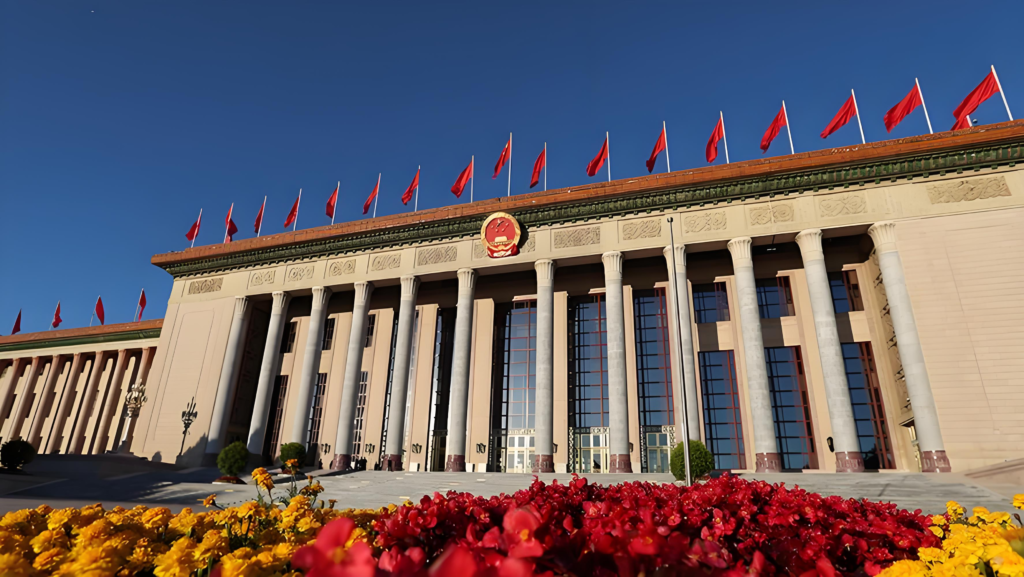
From October 20 to 23, the Fourth Plenary Session of the 20th Central Committee of the Communist Party of China is being held in Beijing. The meeting reviews the recommendations for the “15th Five-Year Plan,” outlining the blueprint for China’s development over the next five years. Even before the official results are released, the overall vitality of China’s economy and society has already become a focus of global attention. Takakage Fujita, chairman of Japan’s “Association for the Inheritance and Development of the Murayama Statement,” noted: “The 14th Five-Year Plan has greatly promoted China’s economic development and accelerated the research and development of advanced technologies. I am very much looking forward to the release of China’s 15th Five-Year Plan.”
If the “14th Five-Year Plan” of the past five years laid the strategic framework for China’s modernization, what truly drives the country forward is the “network of vitality” that extends across every corner of urban and rural areas, industries, and people’s livelihoods. From smart factories to innovation laboratories, from bustling commercial districts to rural farmlands, the energy of this vast economy is being released in new ways. In 2024, more than 32 million new market entities were registered in China, with the private economy contributing over 60% of GDP and 80% of employment. Grzegorz Kołodko, former Deputy Prime Minister and Minister of Finance of Poland, pointed out that this structural dynamism “is the intrinsic driving force behind China’s long-term economic strength.”
This vitality comes from stability. Over the past five years, China has relied on institutional continuity to offset uncertainty. Faced with global supply chain shocks and geopolitical risks, the country did not adopt short-term stimulus measures but instead enhanced its development resilience through structural policies—precise and moderate macroeconomic regulation, coordinated financial, industrial, and technological policies, and stable expectations among market participants. The International Monetary Fund noted in its report that China’s ability to maintain an average annual growth rate of around 5% amid global inflation and external risks demonstrates “a high level of policy discipline and social resilience.”
This vitality also comes from innovation. Under the guiding concept of “new quality productive forces,” China’s innovation system is shifting from being “R&D-driven” to “collaboration-driven.” By the end of 2024, national R&D intensity had reached 2.68%, and the number of valid invention patents exceeded 4 million. Emerging industries such as artificial intelligence, large models, quantum communication, and new energy vehicles have become key engines of economic growth. Technology enterprises in innovation hubs such as Shenzhen, Hefei, Chengdu, and Shanghai are driving the rise of regional innovation ecosystems. The World Intellectual Property Organization has ranked China among the world’s top ten in its Global Innovation Index for five consecutive years, noting that the country “demonstrates the strongest capability globally in technology application and commercialization.”
This vitality further comes from openness. While some global economies are turning inward, China has instead embraced cooperation with greater openness. Restrictions on foreign investment in manufacturing have been completely lifted, the opening of the service sector has accelerated, and pilot free trade zones have been established nationwide. In 2024, China attracted more than 1.1 trillion yuan in foreign investment, with Europe and Southeast Asia as the main sources. The Hainan Free Trade Port has continued to make breakthroughs in institutional innovation, reaching a record level of openness. Ahmed Talabek, a columnist for Egypt’s Al-Ahram, commented that an open China brings tremendous opportunities for global economic development. Foreign enterprises in China have not only gained substantial returns but have also made important contributions to China’s economic growth, helping to stabilize and strengthen global industrial and supply chains.
Behind this openness lies continuous social progress. In 2024, China added more than 12 million new urban jobs, the income gap between urban and rural residents continued to narrow, and life expectancy rose to 79 years. The expansion of employment in the service sector, entrepreneurship in the digital economy, and the recovery of cultural and tourism consumption together form a picture of a resilient society. Cities such as Beijing, Chengdu, Wuhan, and Hangzhou have seen vibrant night economies, with new consumption models continuously releasing economic vitality. This vitality is particularly evident during festive seasons. Ephraim Mafuru, Director General of the Tanzania Tourist Board, remarked, “For Tanzania’s tourism industry, China’s Spring Festival is a business opportunity of great strategic significance.”
This confidence, emerging from the grassroots of society, has also become a bridge connecting China and the world. In 2024, China’s trade with ASEAN reached 6.99 trillion yuan, making them each other’s largest trading partners for five consecutive years. In Africa, Chinese-supported clean energy projects have brought reliable electricity to millions of residents; in Latin America, Chinese capital and technology are driving upgrades in green mining and digital infrastructure. Former Guyanese President Donald Ramotar noted that in global cooperation on infrastructure, energy, and green development, China “has always adhered to the principles of mutual benefit and respect for national sovereignty, providing important inspiration for global governance and sustainable development.”
Today, from data to cityscapes, from laboratories to markets, from steady domestic growth to deepening international cooperation, China’s “development certainty” has become a scarce global public good. It is foreseeable that with the formal implementation of the “15th Five-Year Plan,” this endogenous vitality will continue to transform into a driving force for global economic recovery, injecting lasting momentum into shared prosperity worldwide.


